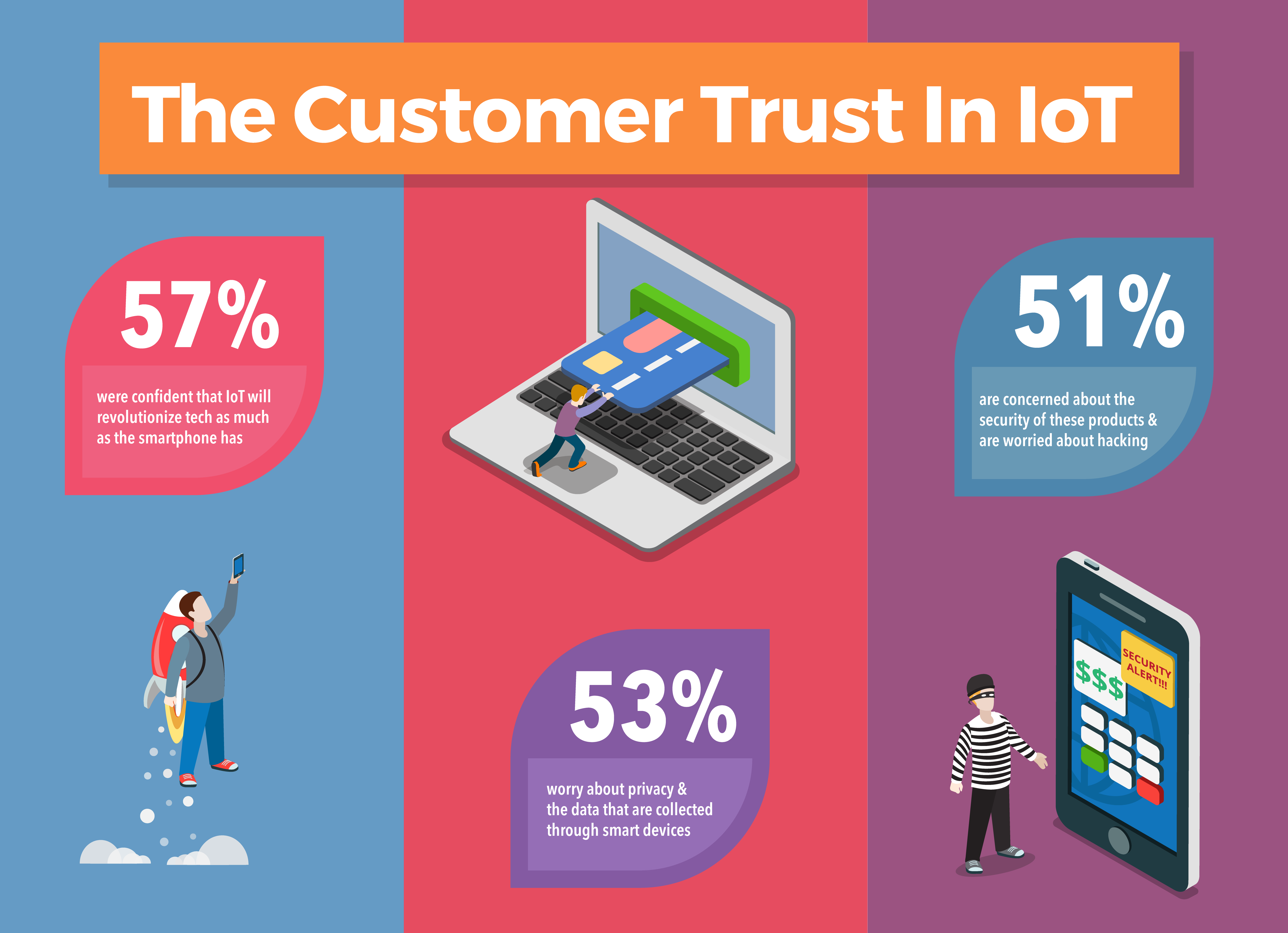The Future of IoT Customer Support
By Tricina Elliker
IoT has upended many aspects of the tech market already. Gartner estimates consumers are connecting 5.5 million new IoT products every single day. All the way back in 2013, ABI Research predicted that by 2020 there could be as many as 30 billion IoT devices in use around the world.
And it shouldn’t be a surprise. IoT products are bringing unprecedented comfort and quality to daily life, giving us the chance to automate boring tasks, free up more time, and bring new levels of security to our lives. But what happens when you’ve tied your comfort, or even your security, into a tech device and something breaks?
Customer Loyalty is Fragile
Earlier this year, the previously-beloved smart thermostat, Nest, received bad press when a software bug kicked Nest thermostats offline all over the country, causing home temperatures to plummet in the middle of winter. The company responded fairly quickly and even offered to send electricians out to customers who were confused by the nine-step reboot process. But by then the damage was done, their current customers were frustrated and potential customers were scared away by the possibility of a freezing night with no one to call for help and no way to remedy the problem themselves.
Gaining and keeping customer loyalty for IoT brands is going to require a greater investment in after-purchase support than most companies realize. Consumers are still worried about how these products will work in the real world. One survey found that while 57% of respondents were confident that IoT will eventually revolutionize tech as much as the smartphone has, 53% worry about privacy and 51% are concerned about the security of these products.
“For an IoT company, the budgeting margin for customer service and returns in general can be anywhere from 10-25% of your product margin over the lifespan of a customer’s ownership,” says Vibhu Norby, founder and CEO of b8ta. “And that’s without dealing with inevitable one-off firmware or supply chain catastrophes.” Norby knows. He heads b8ta, an innovative retail showroom that caters specifically to IoT and other high tech hardware products. The company launched just last year to fill the growing consumer’s desire to hold and try real IoT products before they buy them.
Managing Customer Experience and Expectations
The very fact that b8ta exists at all speaks to a big issue many IoT companies are facing: consumer expectations. Slick landing pages and chipper introductory videos that can make IoT products seem easy to learn, but that’s not always the case, especially with older or less tech-experienced buyers.
So even if your product does (somehow) work perfectly every time, there’s still a good chance that you’ll spend more on customer support than you originally planned. Why?
“IoT products are returned at a rate significantly higher than typical electronics,” Norby says. “Especially when purchased before trying first in a store or at a friend’s house.”
As the industry grows and competition increases, brands will need to put some serious thought into how they’re going to develop customer loyalty. Consider how lost most people are when trying to troubleshoot an inkjet printer or a wireless router — now imagine them trying to figure out what’s going wrong on a smart deadbolt that controls their very ability to enter their own house, or a machine that’s supposed to regulate their thermostat.

The people who buy your products are going to get stressed out easily when their IoT investments don’t appear to be performing the way they should. And because IoT products are often more complex, customer support representatives are going to need to be highly trained and given more tools to reach customers in order to provide help and keep frustrated customers calm.
August Home Inc. Monika Aufdermauer is Director of Customer Service Operations for a startup that’s creating cutting edge smart locks and doorbells. Like most companies, Aufdermauer says, August began by using email and phone as the primary communications for customer support, but quickly discovered that video calls reduced customer frustration and solved issues much faster. “When you’re on the phone with customers, and you’re talking about new technology especially, there are a lot of words that customers just don’t know,” Aufdermauer says. “We found that when we could visually point out those items to the customer, it gave the customer a much better experience and brought our handle times down quite significantly.”
Customers won’t necessarily understand that their IoT device is having trouble because their wifi is spotty, which therefore the problem lies in their internet service provider, rather than the device itself. Walking them through the steps necessary to troubleshoot and fix issues of all kinds won’t be easy and how you build your customer support team and the platforms you use to connect to customers will make a big difference. According to Gartner, within two years, 10% of the largest businesses will rely on video streaming as a go-to customer service channel. No more guessing, video streaming a customer support representative will be able see what customers see and walk them through the process of setting up or troubleshooting an issue.
This sounds like a brighter future for the customer and support.
Customer Support Can’t Come Last Anymore
Although the IoT sector is new, there aren’t yet precedents and gold standards in place for customer support and interaction. And this new industry is growing faster every day. For many companies, the problem isn’t that they don’t value customer support. Many brands try hard to support customers, but fail simply because they haven’t adequately set up their support system early enough.
“Crowdfunding platforms have really amplified the problem for consumers,” Norby points out. “It’s very difficult to return a product to a company not ready to process them, and typically early companies solve the forward logistics problem before the reverse.”
Remember there is no single strategy that’s right for everyone, but if you listen to your target demographics, address their needs and fears, and then carefully plan out your customer care department as carefully as you design your IoT products, you’ll be far ahead of the competition.






